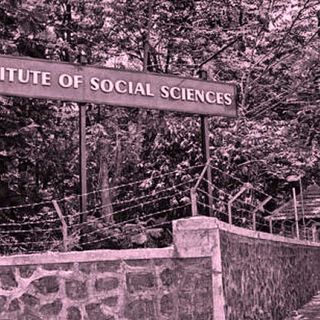In her seminal book, Regarding The Pain Of Others, Susan Sontag says, “Narratives can make us understand. Photographs do something else: they haunt us.”
This is what Mrunal Thakur’s Sonia does in her debut, Love Sonia. She haunts us.
The film follows Sonia, as her search for her sister leads her deep into the dark, brutal world of prostitution in Mumbai and a human trafficking ring that connects India, Hong Kong, and Los Angeles. Tabrez Noorani’s directorial debut serves up the gloom of the brothel cages in Grant Road’s red light area, the lurid colors of lipstick inexpertly applied on young girls’ lips — but the main feature for consumption here is women’s pain.
At very few points is Sonia allowed the space to narrate her own story. Instead of joining her internal processing, viewers are passive witnesses to the world that acts upon her, and her reaction to those external forces. The camera never tires of showing close-ups of Sonia’s face — in tears, in agony, in anguish. In the end, this is what stays — the image of her pain, but not the feeling of it. There’s an emptiness about Love Sonia that haunts far more than the subject it portrays.
The story is a familiar one. Adil Hussain, playing a drought-stricken farmer, feels he has no choice but to sell his older daughter to the local landlord (Anupam Kher). When she realises her sister, Preeti, has been sent away, Sonia naively begs to be sent to Mumbai, too, with the idea that she will find Preeti. Instead, Sonia gets taken to a brothel run by Faisal (Manoj Bajpayee), who sweet-talks and intimidates simultaneously, and Madhuri, the madam played by Richa Chadha. The two get to work, breaking Sonia’s spirit through threats and false promises, while the danger of a more brutal violence lies underneath. The brothel also serves as the stage for Freida Pinto’s portrayal of the slightly unhinged sex worker, as well as Rajkumar Rao’s forgettable role of the NGO worker who tries to save some of the girls. The second half of the film takes us through a global trafficking network, via cargo ships and trucks that transport women’s bodies along with other consumable goods. However, it arguably loses the intensity of the brothel, a place familiar to Noorani since he has worked for a decade with anti-trafficking organizations to rescue real women coerced into working there.
That familiarity shows. The thing that Love Sonia does effectively, by switching between sweeping shots of Mumbai’s skyline and aerial views of the city, to the familiar chaos of the streets, is to bring the world of sex work incredibly close to home. Watching the film in Mumbai is a surreal experience because these images are familiar. One thinks of the American photographer, Mary Ellen Mark’s work documenting the sex workers of Falkland Road, which is strikingly similar in tone and color to Love Sonia‘s cinematography. But where Mark captured the women at ease, smoking in cafes, or around their families, Noorani gives us a spectacle of violence. There’s no time in the film for contemplation (from either the characters or the audience), as Sonia’s journey gets increasingly dangerous.
Love Sonia should be a story of resilience and survival, a testament to the real-life survivors’ stories on which the film is based. And perhaps, if Sonia was allowed the space to process trauma, if she was allowed any kind of internal dialogue, her character would feel more authentic. Perhaps, if we weren’t so inundated with images of women’s suffering in real life, in news reports, in other fiction, we would be able to engage with Sonia’s pain, not just consume it passively.
Sontag would argue that, when viewing violence through a camera lens, a certain passivity is inevitable. “Through the camera, people become customers or tourists of reality,” she says. Sonia’s agency over her own story could have provided the narrative that allowed viewers a way to love her, a way to connect, despite the objective distance. But instead, the film leaves viewers with only her face, contorted in anguish. You’ll be haunted, but unmoved.




